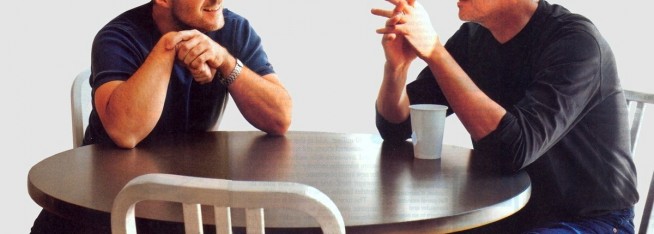A phrase taken from the biography of Steve Jobs, which I’m currently in the middle of digesting. It means “Less but better.” And it was the philosophy of Dieter Rams, Braun’s most prolific industrial designer.
Jonathan Ive, the king of Apple’s product design, was heavily influenced by Rams. As was Steve Jobs. Here are a few nuggets from further pages that describe the design philosophy that Ive and Jobs shared to help revolutionise Apple’s product design.
Jobs on simplicity:
“Simplicity is the ultimate sophistication.” Jobs had aimed for the simplicity that comes from conquering complexities, not ignoring them. “It takes a lot of hard work, to make something simple, to truly understand the underlying challenges and come up with elegant solutions.”
Ive describing his design philosophy:
Why do we assume simple is good? Because with physical products, we have to feel we can dominate them. As you bring order to complexity, you find a way of making the product defer to you. Simplicity isn’t just a visual style. It’s not just the minimalism or the absence of clutter. It involves digging through the depth of the complexity. To be truly simple, you have to go really deep. For example, to have no screws in something, you can end up having a product that is convoluted and so complex. The better way is to go deeper with the simplicity, to understand everything about it and how it is manufactured. You have to deeply understand the essence of a product in order to be able to get rid of the parts that are not essential.
Jobs on design:
In most people’s vocabularies, design means veneer. But to me, nothing could be further from the meaning of design. Design is the fundamental soul of a man-made creation that ends up expressing itself in successive outer layers.
Another approach Apple took that was interesting (and will no doubt spark some debate among us!), was to focus on design driven solutions with a secondary focus on engineering.
At most other companies, engineering tends to drive design. The engineers set forth their specifications and requirements, and the designers then come up with cases and shells that will accommodate them. For Jobs, the process tended to work the other way. In the early days of Apple, Jobs had approved the design of the case of the original Macintosh, and the engineers had to make their boards an components fit. On occasion this could backfire, such as when Jobs and Ive insisted on using a solid piece of brushed aluminium for the edge of the iPhone 4 even when the engineers worried that it would compromise the antenna. But usually the distinctiveness of its designs – for the iMac, iPod, iPhone and the iPad – would set Apple apart and lead to it’s triumphs in the years after Jobs returned.
With technology invading almost every facet of modern life, there is an ever increasing need for simplicity. Taking things that are complex and making them simple. Simple messages, simple interactions, simple journeys to what people want and need from technology. Meaning they are able to lead a simpler and more fulfilling quality of life.
Whether you’re a Mac or PC advocate, you’ll find the book interesting. For the PC lovers, Bill Gates is frequently featured battling it out with Jobs. It’s a great read.













